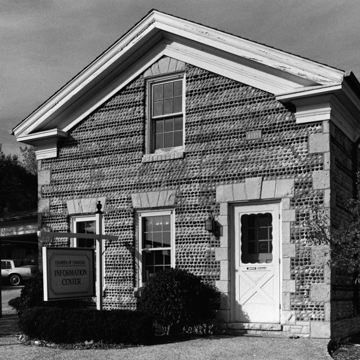In the late 1840s and 1850s, craftsmen from upstate New York brought with them the tradition of veneering rubble walls with carefully chosen multicolored stones. Here, egg-sized pebbles from Lake Michigan’s beaches are laid in a pattern of two courses of black basalt stones, followed by a single course of pink-gray granites, then a course of flints and quartzites in buff, pink, white, and other colors, all aligned horizontally and vertically and set in inverted V-shaped mortar joints so that they protrude from the wall. The effect is polychromatic and highly tactile. This house and others like it combine these whimsical, multicolored exterior decorations with the otherwise staid Greek Revival style. The broad cornice returns along the front-facing gable and quoins of bluish-gray limestone tie the corners together and frame the off-center entrance. Flat arches of wedge-shaped limestone blocks, with prominent keystones at the center, crown the door and windows.
The Dodge House, originally located on Wisconsin Street, has been moved twice, most recently in the mid-1980s. At the time of the first move in the early 1930s, the owner added a limestone porch and a bay window.


